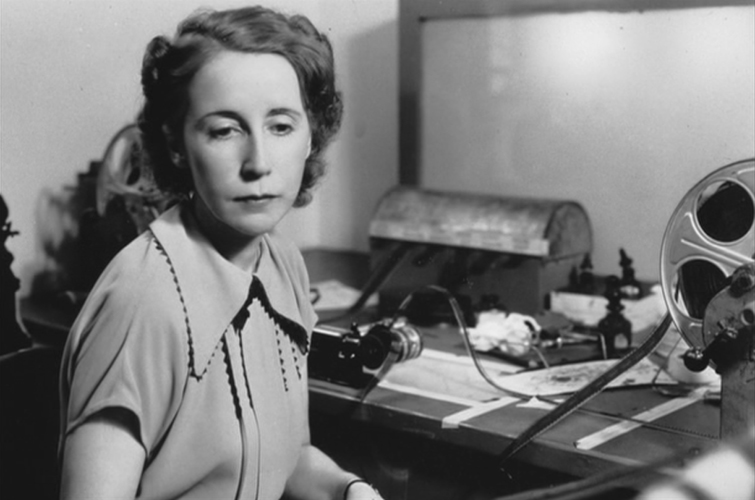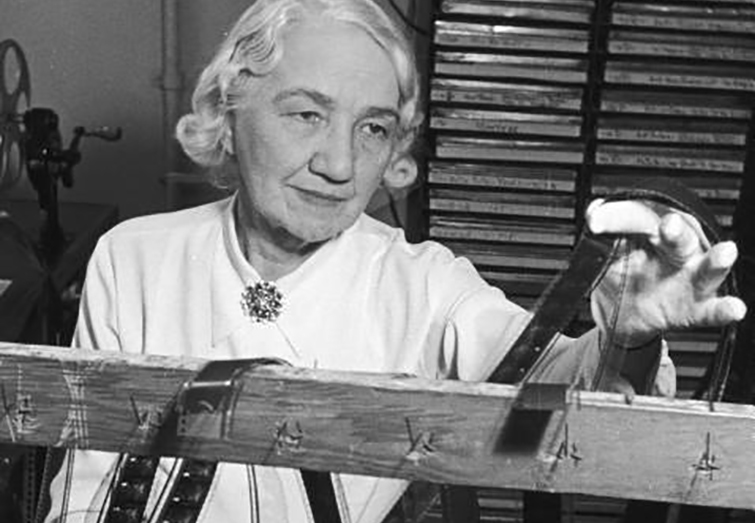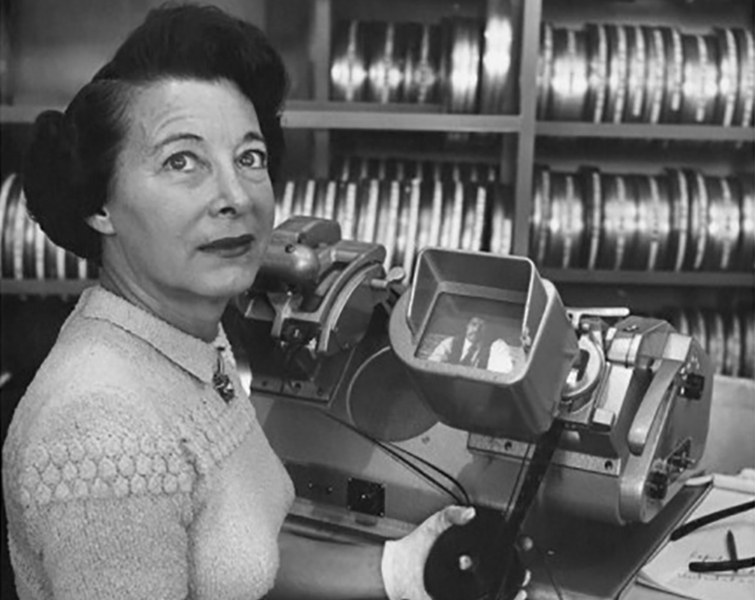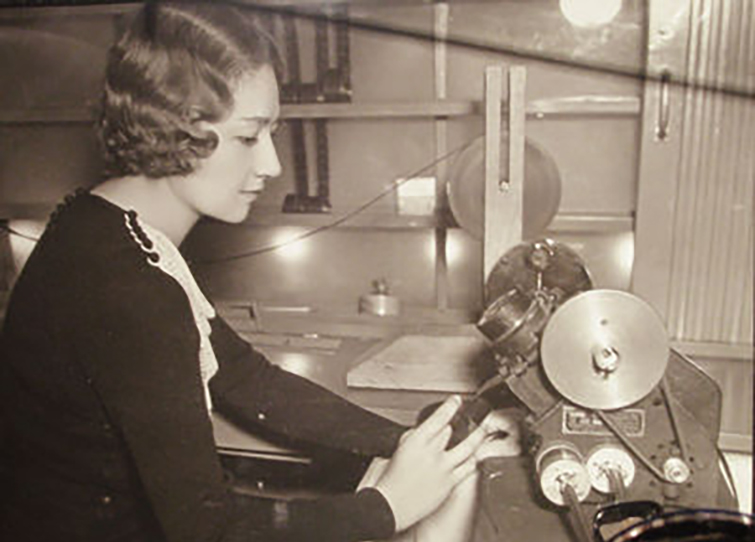
The 4 Unsung Pioneers of Film Editing
The original cutters of film. The 4 women who predated the term “film editor” and whose names dominated the Academy Awards for decades.
Cover image “Stagecoach” from United Artists via NY Times
Stagecoach (1939), The Wizard of Oz (1939), Singin’ in the Rain (1952), The Ten Commandments (1956), Lawrence of Arabia (1962), Bonnie and Clyde (1967), Jaws (1975), Star Wars (1977), Apocalypse Now (1979), Raging Bull (1980), Pulp Fiction (1994), Memento (2000), The Avengers (2012), Star Wars: Episode VII (2015)
Each of these films made cinematic history, but many people don’t realize one thing. All of these films were edited by women. But who are the original pioneers of film editing? Who paved the way for females in film? Before we go in depth, it should be stated that the following is a list of incredible editors. Not “female editors” or “women editors.” No. These are some of the best damn editors who have ever worked in the industry.
Women working as editors dates back to the early days of cinema. In fact, the term “editor” was not even used as a job title. When working with actual film reels, editing a film required you to literally cut and splice scenes together. This gave rise to the term cutter. In the early days of film, cutting was seen as unskilled labor. Practically anyone could be hired for the job, and it actually became a common position for women. The reason most people don’t know this comes from the fact that all of those cutting positions went uncredited in the films.
Margaret Booth

Image from Stay for the Credits
In 1910, actor Elmer Booth frequently starred in the early works of director D.W. Griffith. Elmer was set to have a large role in the Griffith film Intolerance, but he died in a car crash in 1915. Griffith actually gave the eulogy at the funeral. After his death, Griffith hired Booth’s sister, Margaret, as a “patcher.” This low-end editing job provided her with a living.
In 1924 Louis B. Mayer, who would found the Metro-Goldywn-Mayer company, widely known as MGM, hired Margaret Booth as a director’s assistant, where she would eventually rise to cut films like The Mysterious Lady and Camille, starring Greta Garbo. It was actually MGM’s head of production, Irving Thalberg, that would coin the term film editor when describing Margaret’s skill.
In 1936 came the release of Mutiny on the Bounty. The film was a massive success, and Booth received an Oscar Nomination for Best Film Editing. The film had a total of 8 nominations, and won the Oscar for Best Picture. Her talents would not go unnoticed, as Booth soon became the studio’s editor-in-chief in 1939. She immediately became the supervising editor behind The Wizard of OZ, which was edited by Blanche Sewell. Booth did not receive editing credit for working on other major MGM films like The Red Badge of Courage and Ben-Hur. She remained the editor-in-chief at MGM until 1968.
Throughout the 70s and 80s, Booth would supervise a variety of films. The last film she supervised was the 1982 hit Annie. She received an Honorary Oscar in 1978 for her contributions to the art of film making. She passed away in 2002 at the age of 104.
Anne Bauchens

Image from Stay for the Credits
One of the most notorious names associated with early directors is that of Cecil B. DeMille. One of the little known facts about DeMille is that he collaborated with the same editor for over 40 years, Anne Bauchens. Bauchens was personally trained by DeMille as an editor, receiving her first credit on the film Carmen in 1915. DeMille had directed and edited all his previous films himself, but by 1918 he had entrusted all his edits to Anne. The two worked together on nearly every project.
The Oscar for Best Film Editing was first introduced in 1934. Anne Bauchens received one of the original 3 nominations for her work on Cleopatra. In the most shocking revelation, Bauchens is not even credited as the editor of the film. Neither is most of the production crew nor some of the cast. She lost the award in 1934, but would soon return. Bauchens won the Oscar for Best Film Editing in 1941 for North West Mounted Police, the first time a woman had won the award. Anne received 2 more Oscar Nominations for The Greatest Show on Earth and The Ten Commandments. (She actually edited both versions of DeMille’s Ten Commandment in 1923 and 1956.)
Despite her success, Bauchens was often criticized for her technique. In 1965, Margaret Booth had this to say of Anne Bauchens.
Anne Bauchens is the oldest editor in the business. She was editing for years before I came into the business. DeMille was a bad editor, I thought, and made her look like a bad editor. I think Anne really would have been a good editor, but she had to put up with him — which was something. – Editors Guild Magazine
Barbara McLean

Image from wikipedia.org
In 1924, Barbara McLean married J. Gordon McLean, a film projectionist and cameraman. Soon after, she found a job as an assistant editor in Los Angeles, California. Her talents were quickly noticed. She received her first film credit in 1933. That same year, film producer and head of production at Warner Bros., Darryl F. Zanuck, decided to leave the company following a salary dispute. Immediately after his resignation, he created 20th Century Pictures. Two years later his company merged with the Fox Film Corporation. In 1935, Zanuck became the head of 20th Century Fox and named Barbara his editor-in-chief.
1935 also saw the release of Les Misérables in theaters. The film was a hit and garnered McLean her first Oscar Nomination for Best Film Editing. She lost, but was again nominated the next year for Lloyd’s of London. Once again she lost, but would soon be back. She was nominated five more times for Alexander’s Ragtime Band in 1939, The Rains Came in 1940, The Song of Bernadette in 1944, Wilson in 1945, and All About Eve in 1951. She only won the Oscar for Best Film Editing once, for Wilson.
McLean remained with 20th Century Fox until her retirement in 1969. In that time, she was granted full authority over the studio’s film edits. In that era, film directors were not nearly as involved with editing, if they were involved at all. Director’s contracts had them working on their next production while editing had just started on their last project. McLean supervised all those edits. A 1940 issue of the Los Angeles Times declared,
“Barbara McLean, one of Hollywood’s three women film editors, can make stars — or leave their faces on the cutting room floor.”
Dorothy Spencer
Dorothy Spencer began working as an assistant editor in 1924. By the late 1930s, she found herself employed at 20th Century Fox. In 1937 Spencer began co-editing with Otho Lovering. Together they collaborated on several features, most famously known for the work on John Ford‘s 1939 western Stagecoach. The film was also John Ford’s first collaboration with John Wayne. It was a massive success, garnering seven Oscar nominations, including Dorothy Spencer’s first Oscar Nomination for Best Film Editing. The film won Best Music and Best Supporting Actor. She would later collaborate with John Ford again on My Darling Clementine, which is still regarded as John Ford’s best western.
In the 1940s, Spencer took on a solo editing role. It was then she first worked with director Alfred Hitchcock on Foreign Correspondent and Lifeboat. She then worked on four films with director Ernst Lubitsch, including his hit film To Be or Not to Be. In 1945 she edited A Tree Grows in Brooklyn, the feature film debut of legendary director Elia Kazan. As the 1950s rolled around, Spencer was quick to grab her second Oscar Nomination for Decision Before Dawn.
By the 1960s, Spencer had already worked on 60 films. Her experience and skill would come to a test with the 1963 version of Cleopatra. The film was the most expensive movie ever made, and the director’s cut ran a whopping 320 minutes. When released in theaters, the film ran for just over 4 hours. Her work paid off, as Spencer received her third Oscar Nomination.
She would continue editing an average of one film a year for the rest of her career. One of her final credits was the 1974 epic Earthquake. It was her seventh collaboration with director Mark Robson, which earned her a fourth and final Oscar Nomination. It was fitting that her last nomination reflected her first, a tremendous skill for editing action and suspense.
Did you enjoy this piece? Would you like another installment on the role of women as editors? Let us know in the comments below.






